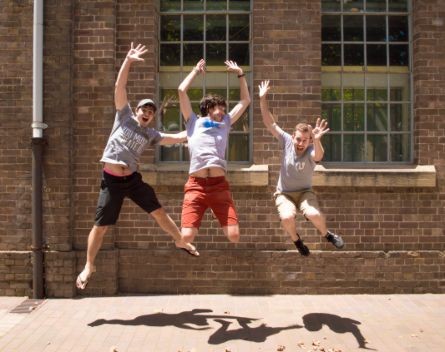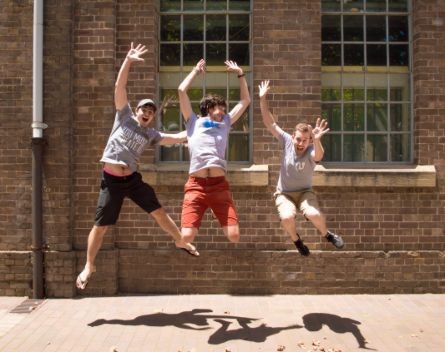Meet the Startmate class of 2013 – part one – StartupSmart

Above: Chris Raethke, Damien Brzoska and Saxon Fletcher from Supportie (Image: Zach Kitschke).
Startmate may have evolved from a trailblazer in the start-up accelerator scene to one of several incubators offering broadly similar things, but it is still regarded as the gold standard by many aspiring tech entrepreneurs.
The Sydney-based program, now in its third year, hothouses web and mobile ventures by throwing an army of top-notch mentors and $50,000 at them, as well as providing them with a handy trip to Silicon Valley.
The participants for the 2013 iteration of Startmate were picked back in December, with Niki Scevak, co-founder of the scheme, declaring “we have been looking for those unique ‘two shit’ teams – those which get shit done, and also give a shit about the customer and their problems”.
So which of the class of 2013 are set for riches in Australia and beyond? We spoke to this year’s participants to get their insights and will be profiling them in two parts on StartupSmart:
Supportie (formerly GetStall)
What? Technical help for your small business. There are experts online waiting to help. ·
Founders? Chris Raethke, Damien Brzoska, Saxon Fletcher
Website: http://www.supportie.com/
Why did you apply to Startmate?
We remember seeing BugHerd being accepted into the first intake and saying, “Wow, that’s a really cool product. This Startmate thing sounds exciting.”
Before applying we were running our own web company, building out MVPs for other people’s start-ups, and we really wanted to pursue an idea of our own.
So late last year we had saved up some money and felt we had a good product (GetStall) to apply with. So we did.
What was the application process like?
As a tech team this was the hardest part for us. The application had a lot of tough questions around sales, marketing, finances, etc.
Getting answers for these meant a lot of whiteboard sessions, reading and learning for us.
It really helped us to grow as a team, and thankfully we have a really strong tech team so we were able to get through (even though our business skills were a bit light on).
How are you finding the program so far?
The program is great – there are a lot of really smart people here and some really interesting problems that people are solving.
It is definitely an emotional roller-coaster, as any start-up could relate with. Some days are up, some days are down.
The big thing we have learnt is that this doesn’t end mid-April when we go to the States. This is something which will continue on for at least the next four to five years.
Why did you pivot?
We were four weeks into pushing GetStall out to the masses and, while we were getting quite a few shops signing up, we weren’t getting many sales.
We spent a few days going over what we had achieved and learnt so far, and the numbers didn’t show us anything which we could get too excited about so we chose to move onto something new.
In hindsight, we put too much pressure on ourselves to be performing quickly. Things take time and unfortunately we learnt that the hard way.
A day off, and a chance to breath and get some sleep, would have been a good idea.
How do you make money?
Like many marketplace-type businesses, the plan has always been to clip the ticket. We are actually only three weeks into this business, so the actual pricing will need to be refined once we have more data.
What is your vision for Supportie?
Supportie is still very much in the early stages and we are still doing a lot of discovery.
We have been focusing on a small segment of the market at the moment, so we can’t say too much more just yet.
How do you plan to achieve your vision?
We’ve already spent two weeks assessing two markets within the Supportie space.
The current plan is to spend a bit more time looking at possibilities in this space and then decide where we want to specifically focus. So the current plan is to learn more and then make a plan.
Kinderloop
What? A simple and secure way for child carers to communicate with parents.
Founders? Dan Day and Daniel Walker
Website: http://www.kinderloop.com/
What was the inspiration for Kinderloop?
Dan Day: After having my two children in daycare for three years, I was frustrated by the lack of communication.
Collecting them at the end of the day, it was impossible to find out what they learnt, ate or did. The carers were always so time-poor as well.
Why is this needed?
Kinderloop solves this problem by allowing carers to record events as they happen during the day.
This saves them valuable time reporting, saves money in consumables and keeps them fully engaged with parents.
What is your revenue model?
Each carer pays a monthly fee and the parents pay for premium add-ons.
Story continues on page 2. Please click below.

